11 Mar 2020 - {{hitsCtrl.values.hits}}
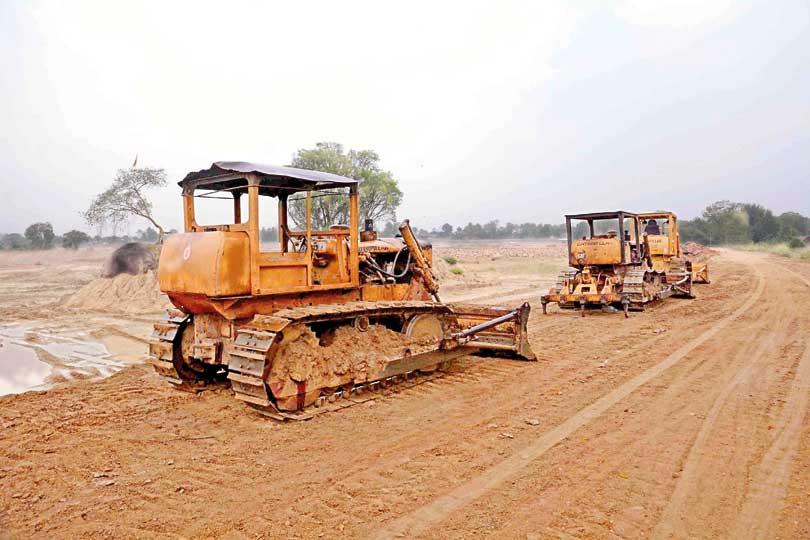
 Farmers in Rajanganaya Yaya 18 in Anuradhapura District are harbouring high expectations. They feel that all their hardships would soon end with a new aloe vera cultivation project which is expected to commence operations in the near future. But the project seems to be adding fuel to the existing fire with regard to environmental concerns since there is no Environmental Impact Assessment (EIA) done.
Farmers in Rajanganaya Yaya 18 in Anuradhapura District are harbouring high expectations. They feel that all their hardships would soon end with a new aloe vera cultivation project which is expected to commence operations in the near future. But the project seems to be adding fuel to the existing fire with regard to environmental concerns since there is no Environmental Impact Assessment (EIA) done.
However, it has received the due approvals from relevant authorities under certain conditions to the dismay of various factions that have filed cases halting its proceedings. The requirement of an EIA is extremely crucial as it is situated in close proximity to the Wilpattu National Park. The project also includes the construction of a dam across Panankani Ela. In this backdrop Daily Mirror visited Rajanganaya Yaya 18 and here’s what this scribe observed.
 Farmers in the area grow vegetables such as brinjal which are sold at extremely cheap rates to earn a living. They work only one harvesting season due to scarcity of water. The aloe vera project has given them new hope especially due to the financial gains they have been promised. During the visit to the area, the Daily Mirror observed how people are getting ready for the new project. The investment for the project is USD 370 million and includes planting seedlings, construction of a dam across Panikkan Kulama Ela, a research plant, factory, indoor playground, research institute and development work at Rajanganaya Junction.
Farmers in the area grow vegetables such as brinjal which are sold at extremely cheap rates to earn a living. They work only one harvesting season due to scarcity of water. The aloe vera project has given them new hope especially due to the financial gains they have been promised. During the visit to the area, the Daily Mirror observed how people are getting ready for the new project. The investment for the project is USD 370 million and includes planting seedlings, construction of a dam across Panikkan Kulama Ela, a research plant, factory, indoor playground, research institute and development work at Rajanganaya Junction.
Once imported these plants need to be quarantined as well. This is applicable to any plant
- Samantha Gunasekara -
Already around 120 people have been employed at the project, some making interlocks while others are clearing the expected area of land. Seedlings are to be imported from India and the extract would be used at the research plant which will be constructed in close proximity to the cultivating area. However, the project site is situated within the borders of the Wilpattu National Park and no EIA has been done during its initial stages.
Most of these lands were obtained by farmers through permits, hence without proper legal procedures. Permits were issued through the Land Development Ordinance section 19 (2) and therefore these lands come under the purview of the Divisional Secretary. They have been given the approval to utilise these lands sans conditions. Permits for some lands have been issued after 2010. However they cannot use any nutrients in the soil as they are state-owned resources. Apart from constructing a house and a toilet, permit-holders cannot construct any additional facility on these lands. They cannot transfer the land as well.
So far, 80 farmers have signed the agreement to give away their lands for this project. They believe that it is being done for their benefit. The agreement signed in September 2019 is valid for 10 years. While the finances are provided by the Company, the plants should be nurtured by the farmers. If there is any issue regarding their lands, the farmers have to solve it at their own expense. Therefore, it is the farmer who is at the receiving end of being accused for violating the FFPO and not the Company. The Company also has the authority to demand the expenses allocated for setting the land up and cultivating the plants.
Attempts to contact Minister, owner failed
Several attempts to contact subject Minister S.M Chandrasena and owner of Aura Lanka Herbals Pvt. Ltd. Dr. Viranjith Thambugala proved futile.
The project also needs approval from the Department of Irrigation, Department of Agriculture and the Central Environmental Authority. However, the DS has issued a letter of approval on the basis that the project is done under the conditions laid out by the aforementioned departments. The DS has issued his approval based on the letter produced by the CEA.
However what is quite doubtful is the fact that the DS has issued his approval within a matter of hours after receiving the letter from CEA dated September 24, 2019. The CEA has then requested to pay a sum of Rs. 2000 on October 2, 2019. But the CEA should have issued its letter only after the payment was done. But the DS has issued his approval on September 24 when ideally it should have been done after October 2.
Through a feasibility study or an EIA such sensitive areas could have been further studied
- Hemantha -
State-owned lands should be utilised through the approval of the Divisional Secretary. It was also found that each farmer has sought individual approval from the DS. Farmers have signed the agreement individually, thereby raising doubts as to whether it was an attempt to avoid the formalities or whether the farmers themselves expected personal gains. Many of these approval forms were dated back to August 2019 and have sought approval to develop the land using machinery.
But the purpose for clearing and developing the lands has not been mentioned. But the subject of the letter issued by the DS reads ‘Regarding the issuance of land to cultivate aloe vera’. However the DS had granted approval on several conditions. Although approval has been sought to use machinery on these lands, the DS doesn’t seem to have given any such approval according to his letter. It further states that if any item of archaeological importance is found, he should be informed through the Grama Niladhari. Apart from that they are not allowed to fell trees of commercial value. The fifth condition states that the project shouldn’t change the geographical features in the area.
However, when we visited the area we observed that the area has not only been dug using backhoes, but the rocks are in the process of being moved towards the reservoir. This project therefore violates the fifth condition mentioned in the letter issued by DS. In addition to that the project also violates section 9 of the FFPO. Therefore the DS has the authority to cancel permits issued to these farmers to utilise their lands and obtain the lands under his purview.
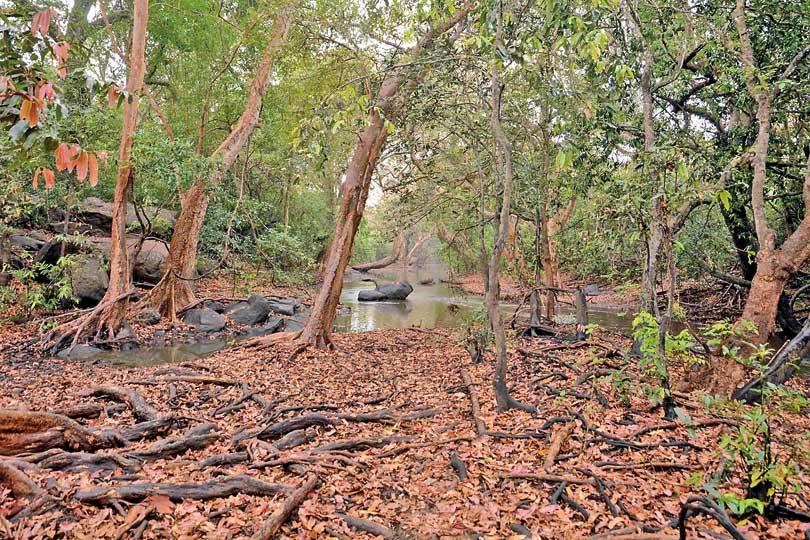
“People in this area don’t have water and they pump water from the nearby lake,” said A. D Wijedasa, an area resident who is now employed at Aura Lanka Herbals. “Farmers work only one harvesting season. The water from the nearby stream doesn’t reach these vegetation.
The company prepares the land for the farmer during the first phase. When the farmer earns a profit he has to give 10% to the company. 4800 seeds will be given for one acre of land which is expected to produce a yield of 20-30 plants. These will be removed in six months. Thereafter a new set of seedlings are provided by the company. Once the land is set, the company doesn’t interfere thereafter. Farmers have signed a document which states that the land belongs to the farmer and that they cannot plant any crop apart from aloe vera. The lake was constructed following a request from the local farmer organization because this is an area with a higher elevation and therefore we don’t get water from the Rajanganaya Project either,” said Wijedasa.
S. Kusumawathi is having hopes on the new project in the area. “We too are planning to give our land,” she said. “The owner of the company has constructed the roads and has installed solar panels. We didn’t have any of those facilities before. He even constructed this house for us. Using this project we will also get water to our households,” said Kusumawathi.
“I grow brinjal to earn a living and that is not enough to raise my family,” opined S. Nilmini Mangalika. “There have been days when I have sold one kilo at Rs. 5. Such are the hardships we face and this project is truly a God-sent. Those who are employed get Rs. 1000 per day and likewise it has provided many job opportunities to people in the area,” said Mangalika.
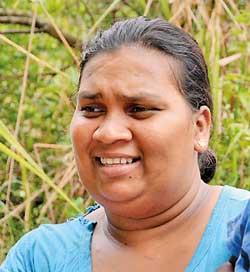
“I uprooted around 30 coconut trees and gave around four acres of my land to this project,” said Thushara Pushpakumara. “They have promised to give us Rs 3.5 lakhs per month. The employer has also identified 12 families and he is giving them a nutrition package worth Rs. 5000 each every month. The project will give job opportunities to a lot of people in the area and we extend our gratitude to the owner,” said Pushpakumara.
They have promised to give us Rs 3.5 lakhs per month The project will give job opportunities to a lot of people
- Thushara, a farmer in the area -
S. P Janakasiri earns a living by plucking coconuts. “I gave ½ acre from my land as well,” he said. “They asked for a copy of the deed of the land and also asked us to sign a form. If you see, this is a rocky area and we cannot plant anything due to this condition. The rocks are taken to fill the reservoir. He developed this area and it is a relief to us,” said Janakasiri.
However, the learns that not all farmers have given their lands as they only have small plots of land to call their own garden spaces.
However, another questionable matter is the construction of a dam across Panankani Ela, a tributary that feeds into the Kala Oya, situated within the Buffer zone of the Wilpattu National Park. “If the owner did this project with an EIA, the matter wouldn’t have aggravated,” said a wildlife officer under strict condition of anonymity. “Through this EIA we could have identified any animal living within this buffer zone area, impact on the waterway and other sensitive matters. If an EIA was done, he would have gotten the approval to proceed under certain conditions that would allow the progression of the project with limited impact on the environment. Since he didn’t go to such an extent we had to file a case under section 9 clause a (1) and a (2) which limits development activities within a buffer zone in close proximity to a national park or forest reserve,” the wildlife officer said.
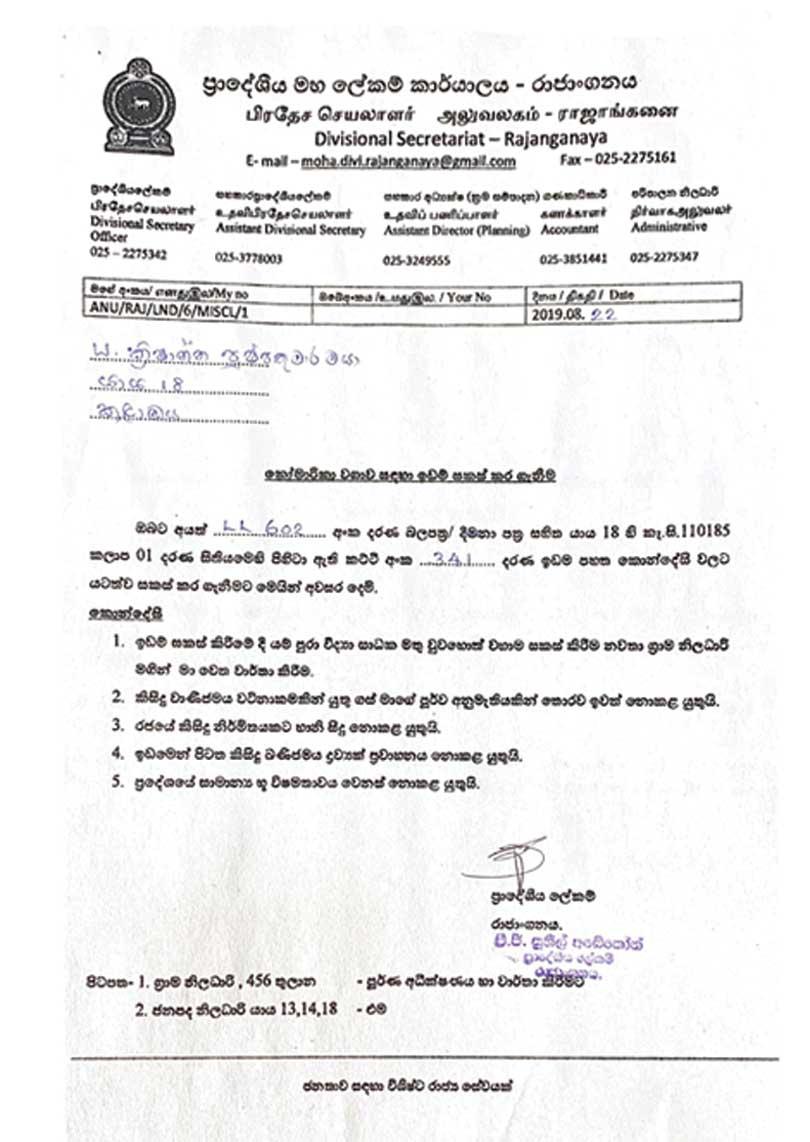
A buffer zone is an area of land designated for environmental protection. Therefore the usage of resources in such an area could be limited both legally and traditionally. While some buffer zones have been legally gazetted, others haven’t been gazetted as yet. The buffer zone at the Wilpattu National Park is protected under the Flora and Fauna Protection Ordinance (FFPO). As per section 9 clause
(1) an area within one mile of this buffer zone cannot be utilised for any personal uses without approval from Director General of Department of Wildlife Conservation. If any such activities are being conducted, the DG has to request for an EIA as per clause 9 a
(2). The report should then be open for public debate. Such legal interventions have been laid out after studying the importance of a national park or forest reserve as a protected area. In addition to that, the protected area is further protected through this buffer zone.
As per the project, approval from DG of DWC is the most important document which they haven’t obtained. This is because this land is situated within the Wilpattu National Park buffer zone.
It was also revealed that the company hasn’t sought approval from DG of DWC. One of the arguments is based on the fact that the reservoir that is being constructed along with the cultivation area doesn’t fall within the buffer zone. “According to the National Environment Act, the approval process for this project is highly unacceptable,” opined Hemantha Withanage, senior environmental activist and executive director at Centre for Environmental Justice.
“Aloe vera has a global market and if the project was done with proper approvals, it would generate a lot of employment opportunities apart from generating revenue for local farmers. Chena cultivation is the main source of income for people in Rajanganaya and therefore the land is degraded to an extent. The water retention too is limited as it is used for crops such as paddy. Through a feasibility study or an EIA such sensitive areas could have been further studied. But the authorities sped up the approval process with the blessings of the Minister,” saidWithanage.
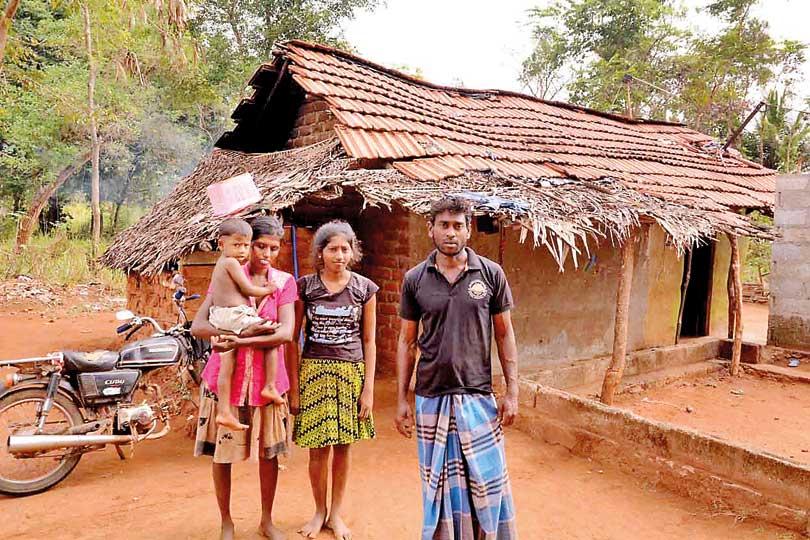
The project has raised expectations among beneficiaries such as Janakasiri and family
“The farmers themselves have agreed to give ½ acre of their lands to this project,” said Rajanganaya Divisional Secretary Sunil Abeykoon. “The company has requested for 1500 acres of land, but we can’t give such a vast extent of land. In fact there’s no state land to be given in Rajanganaya. Thereafter the farmers have agreed to give their own lands and around 80-100 acres of land have been cleared already,” said Abeykoon.
When asked how they would pump water to the reservoir that is being built, Abeykoon said that they are restoring an abandoned lake. “It will fill during the rainy season and there’s no need to pump water. It will provide water to a few paddy cultivations in close proximity and the rest would be utilized for the project,” Abeykoon said.
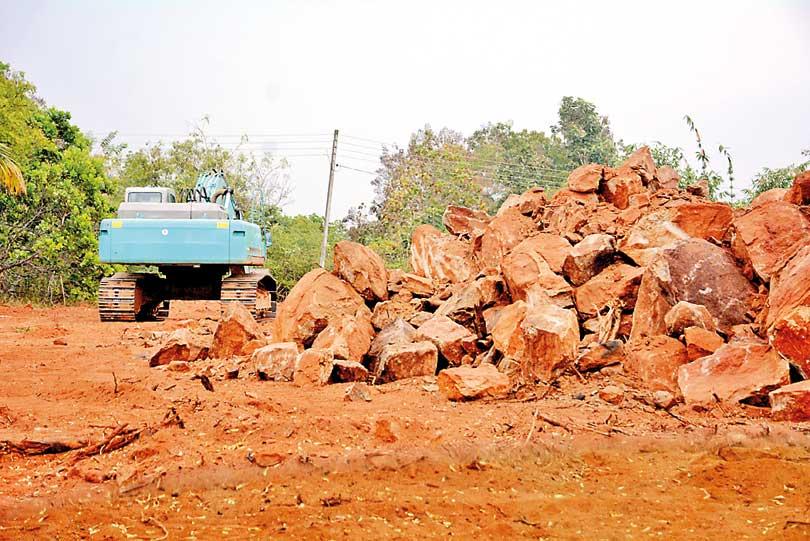
Large rock boulders have been dug which would be moved to construct the lake bund
Dailymirror also learned that the seedlings for this project will be imported from India. However, under the Plant Protection Ordinance any plant imported into the country should have a permit. “This should be taken from the Department of Agriculture,” said Samantha Gunasekara, Former customs director-general. “Once imported these plants need to be quarantined as well. This is applicable to any plant,” he said.
(Additional reporting by Bingun Menaka Gamage and Tharindu Jayawardena)
23 Dec 2024 22 minute ago
23 Dec 2024 28 minute ago
23 Dec 2024 36 minute ago
23 Dec 2024 1 hours ago
23 Dec 2024 1 hours ago